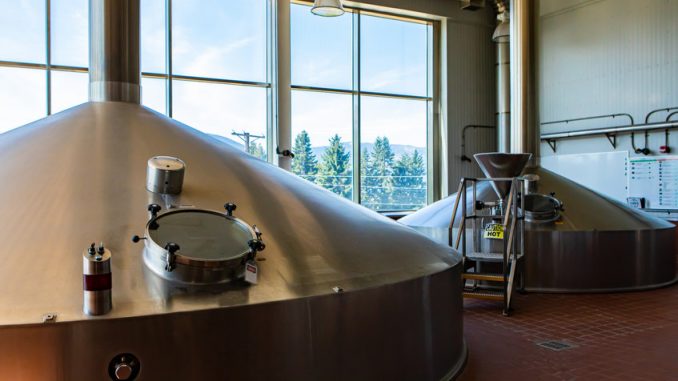
Lautering is a term for a process in brewing where brewers separate mash into a clear liquid sweet wort and the remaining or spent grain. It has three steps: mashout, recirculation and sparging. The intention of lautering is to create a wort which is then boiled to kill off any bacteria before the fermentation properly takes place.
The term lauter comes from the German word abläutern, meaning roughly “to rinse off” or purify.
In Britain, the mashing and lautering take place in a single tank called a mash-lautering tun. It is still practiced by smaller brewers including those at home because of the convenience of using just one vessel.
What makes a vessel a lauter tun is the false bottom or braid and slotted tubes. It helps facilitate filtering of the liquid from the wort. No heating is needed for the process because mash conversion is complete.
The Mashout Step
The process of lautering starts where the mash, which is the product of water and grain boiled together in a pot is separated into the clear liquid sweet wort and the remaining spent grains.
Mashout is when the temperature of the mash is raised to 77°C (170°F) to put a halt to any further breakdown in starch by enzymes. It stops the mashing process producing more fermentable sugar but also makes the mash and the wort more fluid. Mashout is considered especially necessary if there is less than 3 liters of water per kilogram of grain (3 pints of water per pound of grain), or if the grain is more than 25% wheat or oats.
Recirculation
Recirculation occurs when the wort is removed from the bottom of the mash tun and returned at the top to help with clarification. In most commercial breweries, this process is monitored until the wort is clear as measured by a sight glass or turbidity meter.
Sparging
Sparge derives from the Latin spargere, meaning “to sprinkle or scatter”. It means the process of sprinkling hot water over the grain bed to rinse sugars away from the grains as wort is drained from the lauter tun. It is a step which is optional.
Leave a Reply